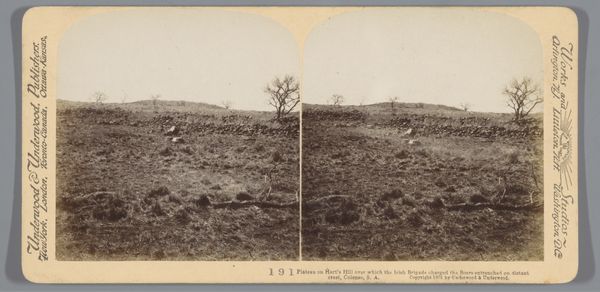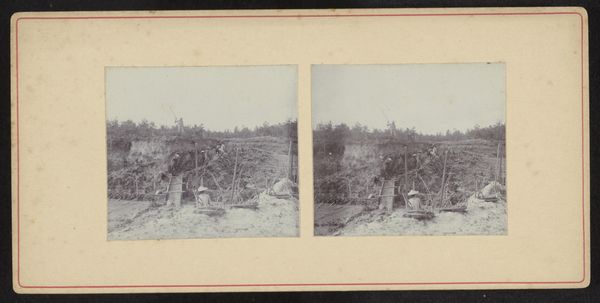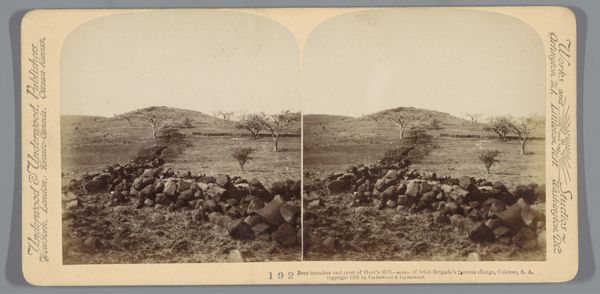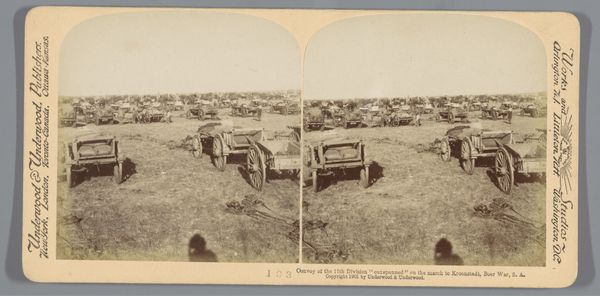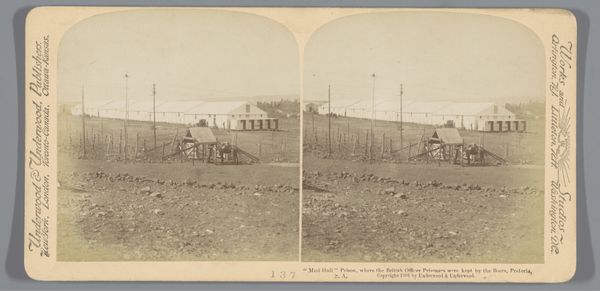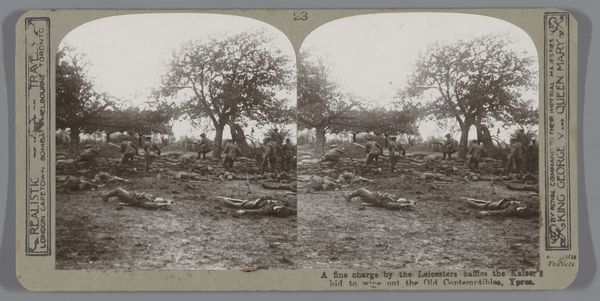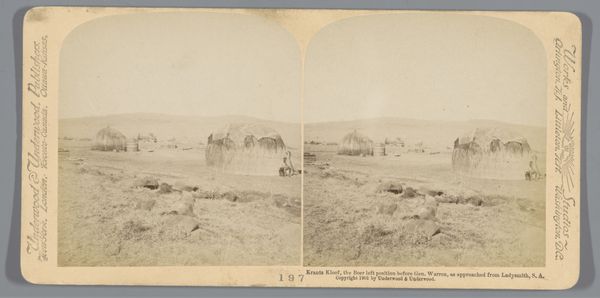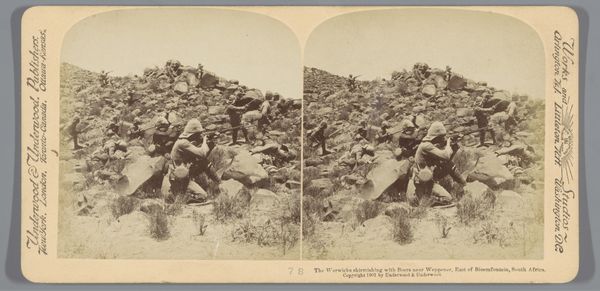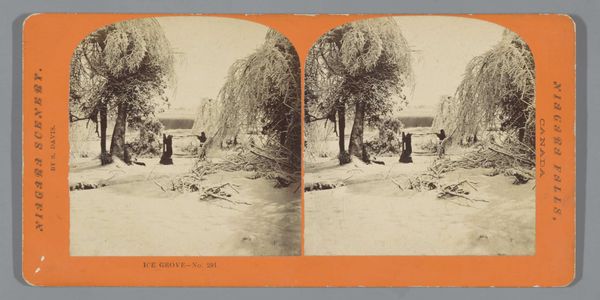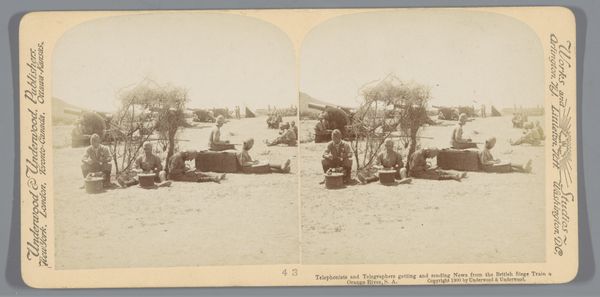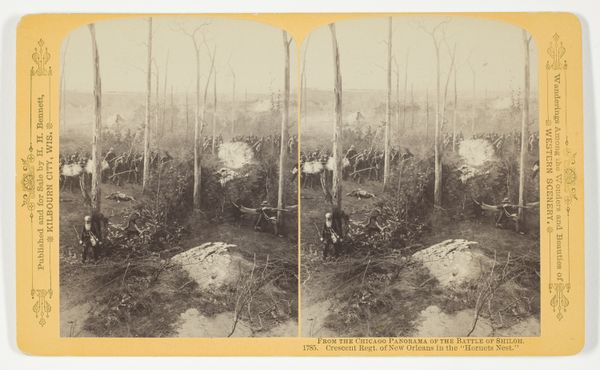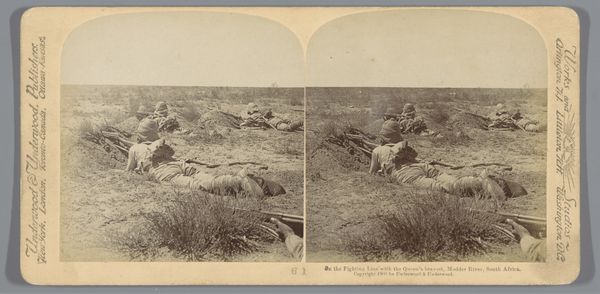
Gezicht op oorlogsgraven van Britse soldaten uit de Tweede Boerenoorlog in Zuid-Afrika 1901
0:00
0:00
print, photography, gelatin-silver-print
# print
#
landscape
#
photography
#
gelatin-silver-print
#
genre-painting
#
realism
Dimensions: height 88 mm, width 178 mm
Copyright: Rijks Museum: Open Domain
Curator: There’s a haunting stillness about this gelatin silver print. "Gezicht op oorlogsgraven van Britse soldaten uit de Tweede Boerenoorlog in Zuid-Afrika" or "View of war graves of British soldiers from the Second Boer War in South Africa," made in 1901 by Underwood & Underwood. It captures something desolate. Editor: Desolate is right. The sepia tones and stark landscape create this overwhelmingly melancholic mood. What strikes me first is the rawness, the utter lack of sentimentality in representing loss. The composition is interesting, the rigid stone boundary in the front set in stark juxtaposition with the rolling, unbounded hills in the background, almost suggesting an idea of imposed limitation onto natural freedom. Curator: Exactly. Underwood & Underwood, known for their stereoscopic images, were masters of realism. They aimed to transport viewers to distant lands, to witness history firsthand. The composition isn’t conventionally beautiful; it’s honest. The eye is immediately drawn to the contrast between that roughly-hewn stone boundary and the crosses within. It is the barrier of grief, both physically and metaphorically. The positioning and rough texture makes the man in the photo—likely tending the graves—appear very small. It shows a certain bleak isolation and emphasizes his place between the living and the dead. Editor: Absolutely, this image embodies raw grief. Look how the perspective guides you into a deep and somber focal point where light and shadow emphasize those morbid grave markers. You’re spot on, with that focus creating isolation. There’s also a sense of unsettling calmness about the photograph despite what is depicted, the sky is clear; nature seems unbothered. Curator: I think what is most important to remember is this photograph is more than an aesthetic composition. It's a document, capturing the impact and legacy of colonial conflict. There's power in bearing witness, even through an image produced so long ago. It leaves you contemplating not just the individuals lost, but the larger, often unseen cost of war. Editor: It is a very heavy image, though there is something to be said for its commitment to honestly rendering such profound human suffering as it does. The emotional complexity of the photograph lingers, demanding a respect that even a monument could struggle to inspire.
Comments
No comments
Be the first to comment and join the conversation on the ultimate creative platform.
